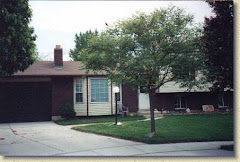| |
Saturday, January 12, 2008
CARS........BUY AND SELL YOUR CAR
After it hit the market in 2003, the Murano's sales grew every year through 2006. As dealers clear their lots of 2007 models, it appears that sales have held steady in 2007, too. The fact that sales grew as the Murano aged illustrates how it has ridden the crest of the car-based-SUV wave along with its main competitors, the Honda Pilot and Toyota Highlander. Though the Murano was completely redesigned for 2009, it remains a five-seater, where the Pilot has always seated eight and the Highlander has offered an optional third row of seats for a few years.
The 2009s hit dealerships early in January 2008. There is no 2008 model. There are three trim levels: S, SL and LE. The lower two come with front- or all-wheel drive. The LE comes only with AWD. I drove an S and SL — both equipped with all-wheel drive — and toyed with the extra features in an LE. The new generation plays to the strengths of the earlier one, with welcome improvements and updates but no single exceptional attribute. The base trim level brings an impressive level of quality.
As of this writing, prices are not available, but they're likely to hold the line with the previous generation, which now lists for between $27,830 and $31,930 excluding destination charges.
Exterior & Styling
It certainly isn't easy these days, but Nissan has successfully etched a distinctive brand face for its cars and SUVs. Though bolder than before, the Murano's nose looks like a cross between the previous generation and the smaller Rogue crossover, with new headlight clusters and grille. Fog lights are standard on the SL and LE. The rear end isn't as bulbous; it also resembles the Rogue, but with an oddly shaped rear window styled to improve visibility. LED taillights and dual chrome tailpipes are standard. Black roof rails are optional on the S and SL; the LE comes with silver-accented rails. The crossbars that make it a proper roof rack are optional for all three trims.
The S and SL trim levels come with 18-inch, six-spoke aluminum-alloy wheels; the LE has 20-inch, five-spoke alloys.
Ride & Handling
The Murano's ride is comfortable and its handling competent, with well-weighted steering. There's some sportiness in the styling, but this isn't a sport wagon like the Mazda CX-7. I found the ride quality softer than the first generation's, and there's some body roll, but it's by no means a problem. Note that my test drives were on the standard 18-inch wheels with all-season tires rated P235/65R18; the LE's 20-inchers and lower-series tires (P235/55R20 tires) are likely to have a firmer ride. Overall, the Murano's dynamics are appropriate, and that's as much as I'd ask of it.
According to Nissan, the rear independent suspension was reworked to improve the backseat ride, which had garnered some criticism. I don't recall the earlier model riding exceptionally rough, but I spent some time riding in this one's backseat and it was comfortable. I even nodded off, which I don't often get to do in a car.
As before, the Murano uses a 3.5-liter V-6 teamed with a continuously variable automatic transmission and can be had with front- or all-wheel drive. (The top, LE, trim level is AWD only.) Now the engine has 265 horsepower and 248 pounds-feet of torque, up from 240 hp and 244 pounds-feet. From the time of its debut through present day, the first-generation Xtronic CVT was one of the best we've driven — possibly the best. To be fair, it has benefited from the same advantages as have conventional automatics and larger engines — they make each other look good when compared to high-revving four-cylinders. Beyond that, Nissan's use of a torque converter to launch from a standing start makes it feel perfectly natural to anyone who's driven an automatic. (The torque converter, which most automatics use to connect the engine to the transmission, gives a smooth power transfer. Some CVTs use an automated clutch that can jerk a bit on launch and when braking to a stop.)
The new Murano has the second-generation CVT first employed by the Altima sedan and coupe, which share this model's platform. It improves by responding more quickly to the accelerator pedal and to whatever situation you happen to be in: passing, cruising, accelerating. Previously it occasionally felt like there was a rubber band connecting the pedal to the throttle — not the weakest rubber band on a CVT, but a rubber band nonetheless.
There's plenty of power for off-the-line starts, and decent oomph when passing. Again, it's partly because the engine is larger and needn't rev as high, but there's no real problem with excessive and inappropriately timed engine noise like you find in some four-cylinder/CVT pairings. I have no doubt that many casual drivers could operate the Murano indefinitely and never know it's any different from any other automatic.
Higher fuel economy is a claimed advantage of CVTs, but there's never been any other transmission in the Murano, so we can't verify this. The 2009's mileage is certainly competitive, though, and it's the same as the 2007 (using the EPA's more-accurate 2008 calculation method) except for a 1 mpg improvement in city driving for the AWD model. Premium gasoline is recommended but not required.



























